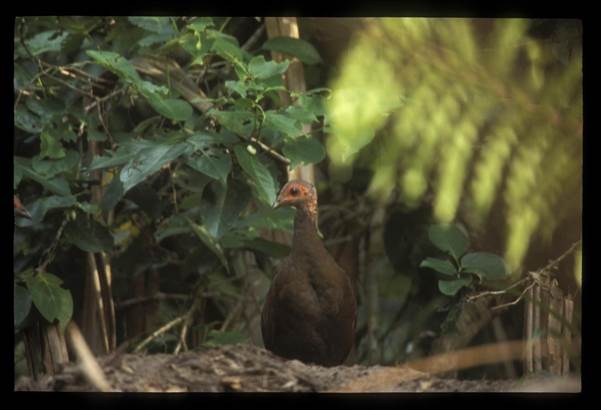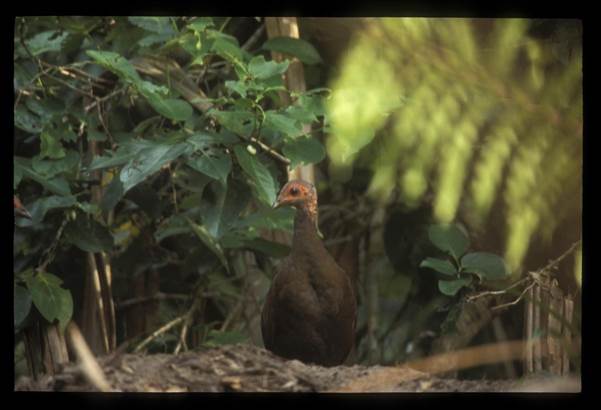Description

Disclaimer: Copyright infringement not intended.
Context: Great Nicobar Island (GNI), situated at the end of the Andaman and Nicobar archipelago, is in peril.
Details:
Concerns:
- While it has withstood great changes—from deforestation to natural disasters like the tsunami of 2004—ever since the first settlers arrived from the mainland, it is now set to be altered like never before.
- If the proposed plans for an international container transhipment terminal, power plant, township area, and international airport, as part of the large-scale development project put forth by NITI Aayog and the Andaman and Nicobar Islands Integrated Development Corporation Limited, materialise, the landscape, along with its unique people and flora and fauna, will change irreversibly.
About:
- GNI lies between the Bay of Bengal and the Andaman Sea in a tectonically sensitive zone.
- The largest of the Nicobar group of islands at 910 square kilometres, it has an astounding array of microhabitats: sandy and rocky beaches, bays and lagoons, littoral patches with mangrove communities, rural mosaic landscapes, monocultures, dense rainforests, coastal forest patches, riverine habitats, and estuarine stretches.
- Each of these habitat types is home to an uncommon assemblage of species, including marine animals, reptiles, birds, mammals, trees, ferns, insects, crustaceans, and amphibians, of which several are endemic to GNI and found nowhere else in the world.
The largest mammal on the island is the Nicobar long-tailed macaque ( Macaca fascicularis umbrosa):
- A vulnerable subspecies of the larger family of long-tailed macaques found across South-East Asia.
- This particular subspecies is distinct from its cousins in appearance, behaviour and geographical location.
- The macaque is found on only three of the Nicobar islands—Katchal, Little Nicobar, and Great Nicobar—with GNI being home to the largest population
- The primates have adapted to island life perfectly and make use of rainforests, coastal habitats, and mangroves alike.
- Their staple is the endemic screwpine species, Pandanus fascicularis, which is also the staple of the indigenous Nicobarese communities of these islands.
- Sudden land-use changes enacted over time have caused the macaques to use human-occupied regions of the island for shelter, food, and movement.
Another flagship species from GNI is the Nicobar megapode ( Megapodius nicobariensis):
- A medium-sized scrubfowl species found only in a few Nicobar islands.
- Their largest population is in GNI.
- The Nicobar megapode is unlike any other bird in having a fascinating reproductive biology.
- Known as “temperature birds” locally, they collect soil, sand, leaf litter, and other debris from coastal forests to build “mounds”, which can be up to four-feet high, to hold their eggs until they are ready to hatch.
- Two or three pairs of megapodes maintain the mounds, ensuring that the eggs remain at the perfect temperature inside the soil.
- As vast stretches of forests from Galathea Bay and the GNI UNESCO Biosphere Reserve are proposed to be chopped down to make way for new roads and infrastructure, the historically invaluable habitats of these birds face destruction.
- Preliminary constructions have already encroached upon their breeding grounds, forcing them to abandon their mounds. Over two-thirds of the total number of megapode nests in GNI will be permanently damaged.
Mangroves in danger:
- GNI has a coastline of 202 km, most of which is lined by mangrove communities which grow in clusters, including the endemic Pandanus (screwpine).
- These thick belts of mangrove trees form a natural barrier against calamities like cyclones and tsunamis while supporting coastal and estuarine life including crabs, waterbirds, and saltwater crocodiles and providing a safe refuge for fish and marine animals in the early stages of their growth.
- They are also important for the local fisher community since they play a role in replenishing the fish population.
- If expansive swathes of these littoral mangroves are lost, the island will become more vulnerable to natural disasters
- There will also be considerable loss of the coral reefs along the island’s coastline with the planned constructions claiming over 298 hectares of the adjoining sea bed. GNI will see a rapid decline in marine biodiversity.
.jpeg)
Sea Turtle:
- GNI is currently a sea turtle nesting hotspot: five to six species emerge from the seas annually during their winter breeding months to lay eggs along the coast.
- They instinctively return to the beach of their birth to lay eggs; however, they will reject a nesting site if it is no longer safe or if it is fraught with disturbances.
- The construction of an international terminal along the turtles’ prime nesting habitat will pose severe challenges to their survival.
- Sustained coastal disturbances could permanently deter sea turtles from using the island for breeding in the future.
The Crux:
- Great Nicobar Island (GNI) has an astounding array of microhabitats: sandy and rocky beaches, bays and lagoons, littoral patches with mangrove communities, rural mosaic landscapes, monocultures, dense rainforests, coastal forest patches, riverine habitats, and estuarine stretches.
- The largest mammal on the island is the Nicobar long-tailed macaque ( Macaca fascicularis umbrosa), a vulnerable subspecies of the larger family of long-tailed macaques found across South-East Asia.
- Research in GNI and similar places across the world show how habitat alterations can increase human-wildlife conflict, adversely affecting the populations and health of the animals and leaving them vulnerable to fatal injuries from territorial fights.
- Another flagship species from GNI is the Nicobar megapode ( Megapodius nicobariensis), a medium-sized scrubfowl species found only in a few Nicobar islands.
- An estimated 8,52,245 trees are to be cut down in GNI’s prehistoric rainforests.
- In a land still recovering from the effects of the 2004 tsunami, a project of this scale and magnitude without scientific backing or well-placed mitigation measures is sheer folly.

https://frontline.thehindu.com/environment/niti-aayog-development-project-puts-flora-and-fauna-of-great-nicobar-island-in-great-peril/article66349123.ece












